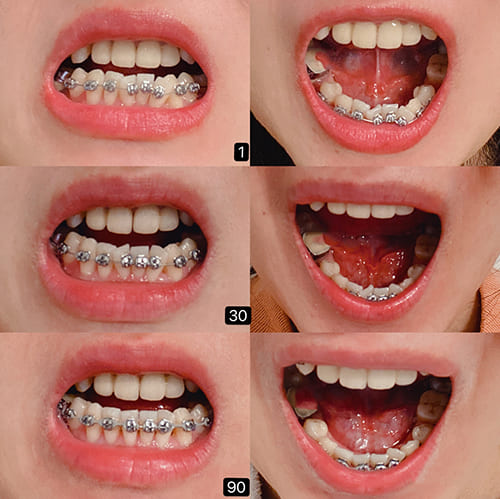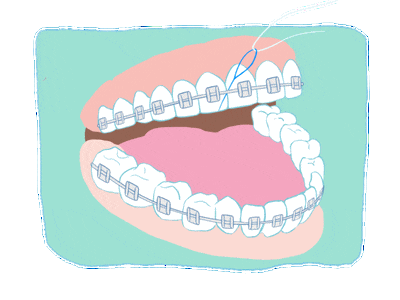The orthodontic process is a process in which the patient and the orthodontist cooperate with each other to align the uneven teeth through the brackets.

The orthodontic process is generally divided into the following stages:
(1) Consultation: including clinical examination before treatment, collection of diagnostic data (such as plaster cast, facial appearance, intraoral dentition photography, facial and dentition X-ray examination, etc.), diagnosis and analysis of medical records, formulation of treatment plans, Explain and discuss with patients.
(2) Start orthodontic treatment: After the treatment plan is determined, the orthodontist will select the appropriate bracket according to the patient's condition and requirements, and carry out corresponding debugging, bonding and afterburning.
After that, a follow-up visit is usually about once a month. The specific time is determined by the doctor according to the needs of the treatment.
(3) Retention: Wear a tooth retainer after orthodontic treatment.
Generally speaking, you need to wear the retainer all day before the end of the treatment, and then gradually reduce the time of wearing the retainer according to the doctor's recommendation.
Failure to consistently wear the retainer may lead to the recurrence of the malocclusion.
Because malocclusions vary from person to person, the specifics of orthodontic treatment will depend on the degree of dental deformity in the individual.
In addition, the complexity of the orthodontic process also depends on the experience of the orthodontist and the cooperation of the patient.
In short, for patients, as long as they cooperate with the orthodontist during the process, they can achieve the ideal orthodontic effect.
Orthodontic Treatment Time
The course of orthodontic treatment is generally about two years, but the time will also increase or decrease depending on factors such as the age, severity, and tooth response of each patient.
The efficiency of orthodontic treatment can be greatly improved as long as you can cooperate well with orthodontists, follow up on time, maintain oral hygiene, and protect appliances from damage.
Orthodontic Considerations
Don' t think that once you put on the brackets, you can do it once and for all. During orthodontics, you should pay attention to diet and oral maintenance. Improper diet and oral maintenance habits may affect the time and final effect.
1. As you know, the orthodontic bracket is attached to the surface of the tooth through a special adhesive, and then the archwire is fixed on it, and a certain force is applied to achieve the purpose of orthodontic treatment.
Therefore, the bracket itself needs to meet the characteristics of being easy to stick and easy to remove, and also needs to have the property of generating appropriate force and bearing a certain amount of chewing force.
2. Since it is a device that will be removed in the future, it is impossible for the appliance to be so close to the teeth that we can eat unscrupulously, and the thin archwire cannot bear excessive occlusal force.

Therefore, you should eat less during the correction process:
(1) Hard food, such as ice cubes, nuts, hard biscuits, sugar cane, hard candy, crabs, lobster shells, etc.,
(2) Sticky Food, such as milk sugar, maltose, and some biscuits.
(3) Large Food, such as apples and pears, should be cut into small pieces before eating.
Of course, in order to avoid dental caries, the intake of sweets and carbonated beverages should be reduced as much as possible during the correction period.
After each meal, the oral cavity should be thoroughly cleaned with the correct brushing method, supplemented by oral cleaning products such as dental floss and interstitial brushes, to avoid the occurrence of tooth enamel demineralization, dental caries, gingivitis, or other complications.

More information will following, please visit Bestondental.com
Contact: Tala lee
Phone: 86-15291766814
E-mail: [email protected]
Whatsapp:0086-15291766814
Add: Longhua street,shenzhen City,Guangdong,China
